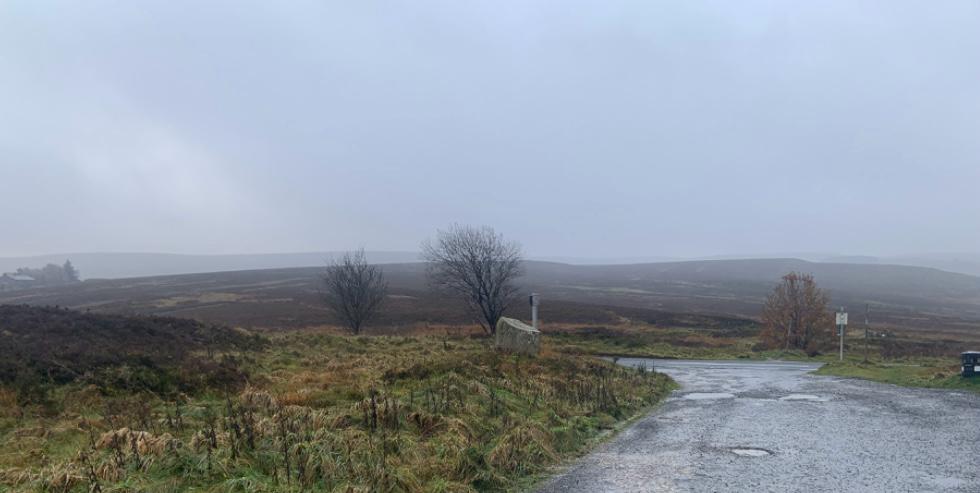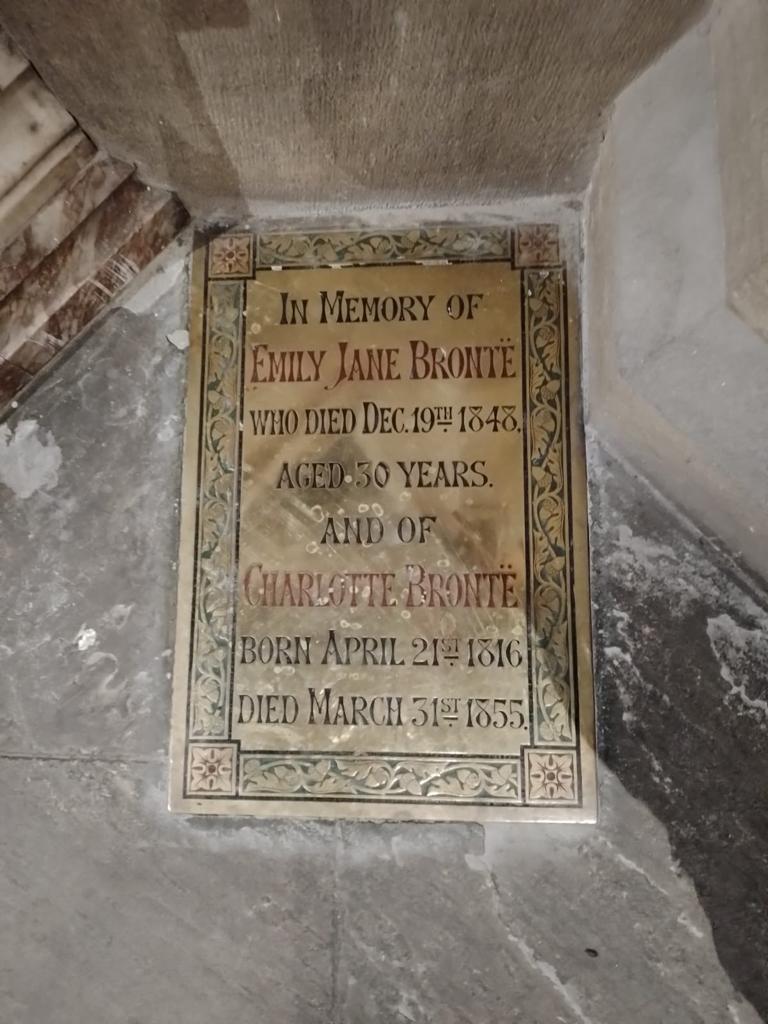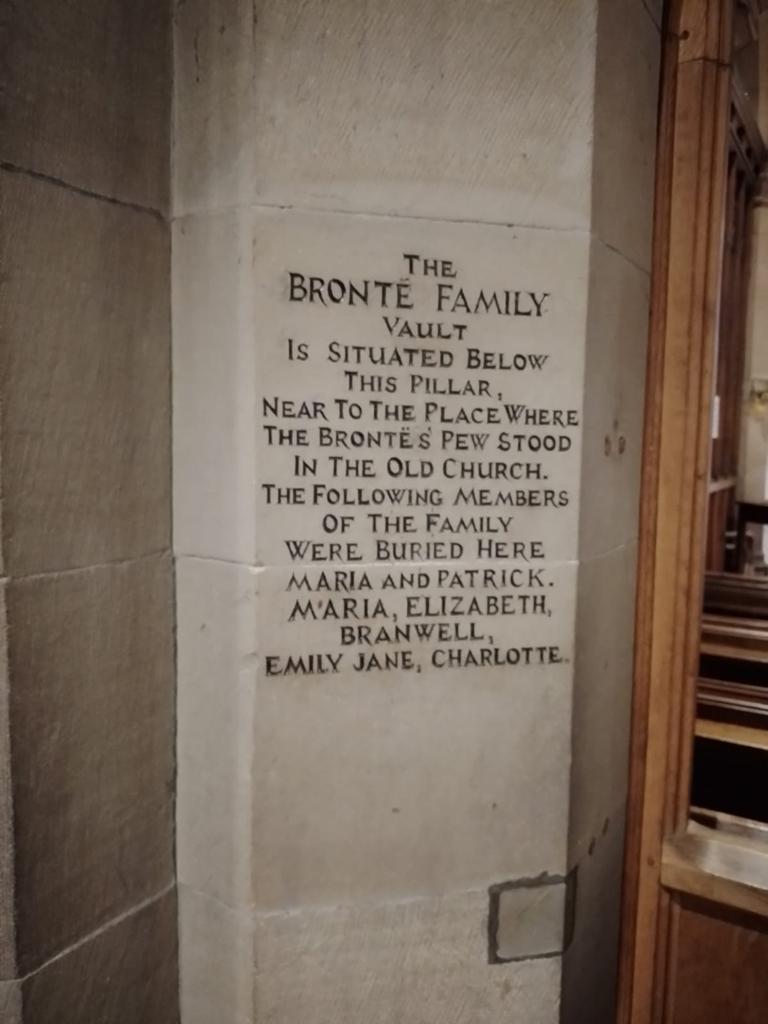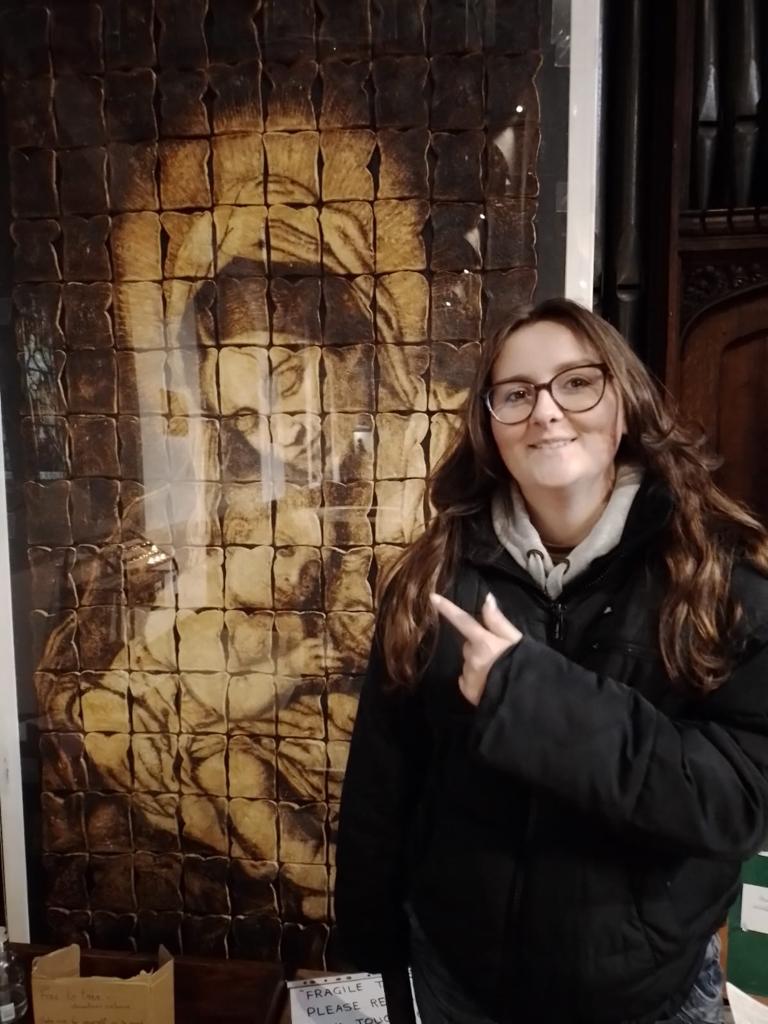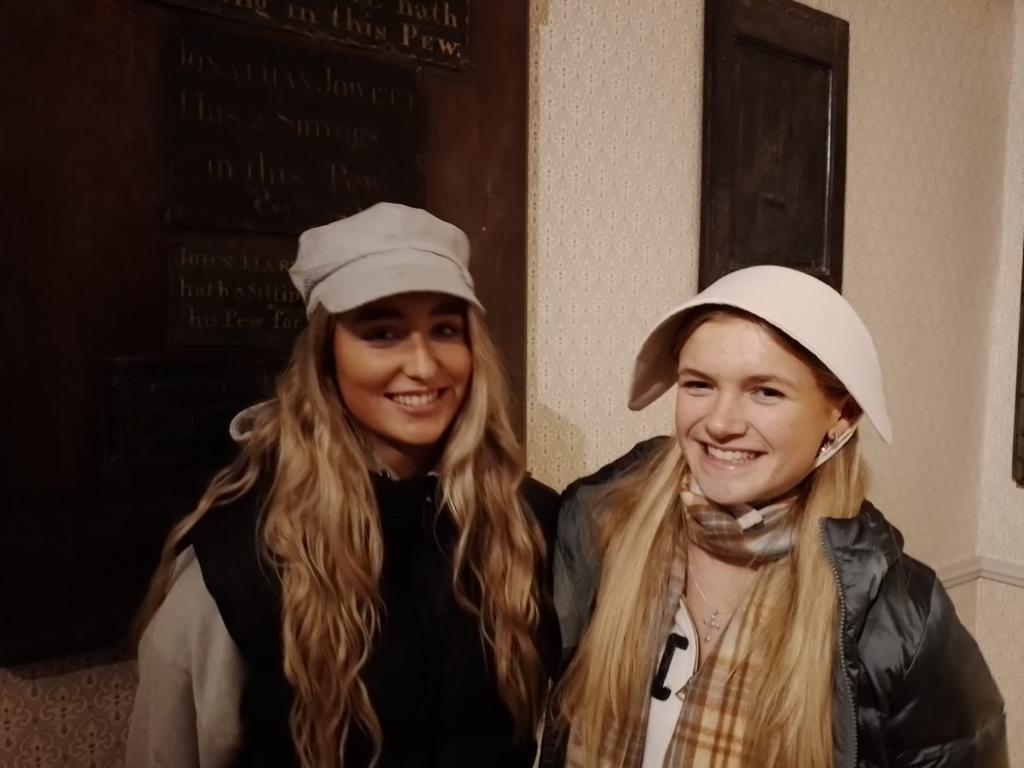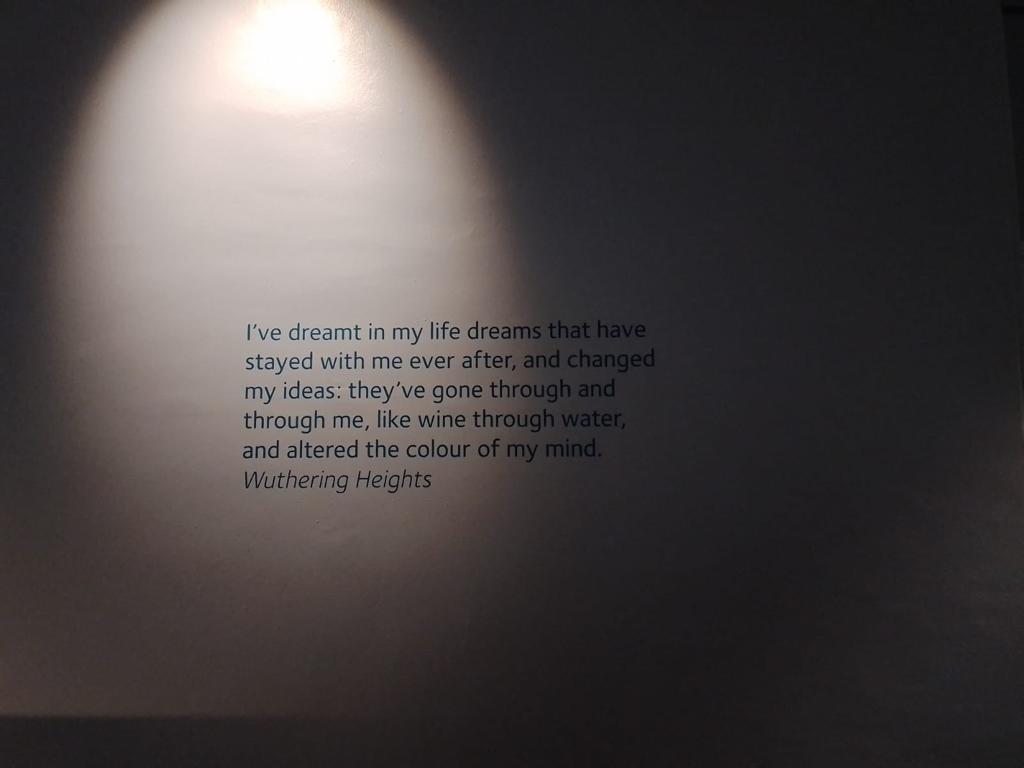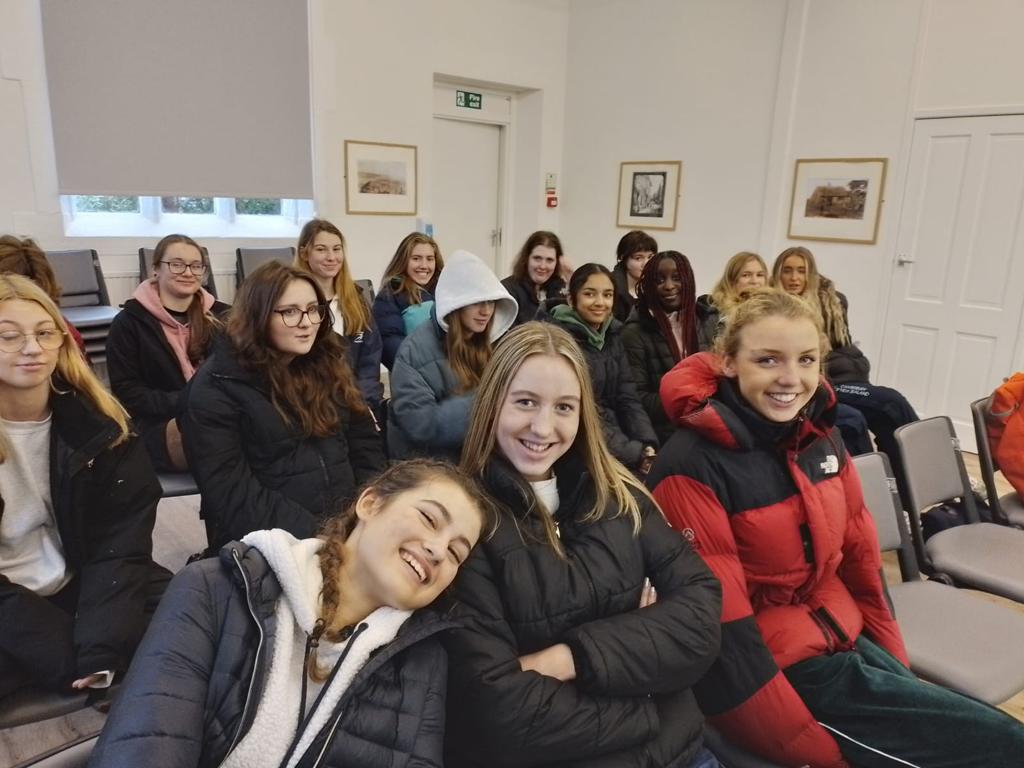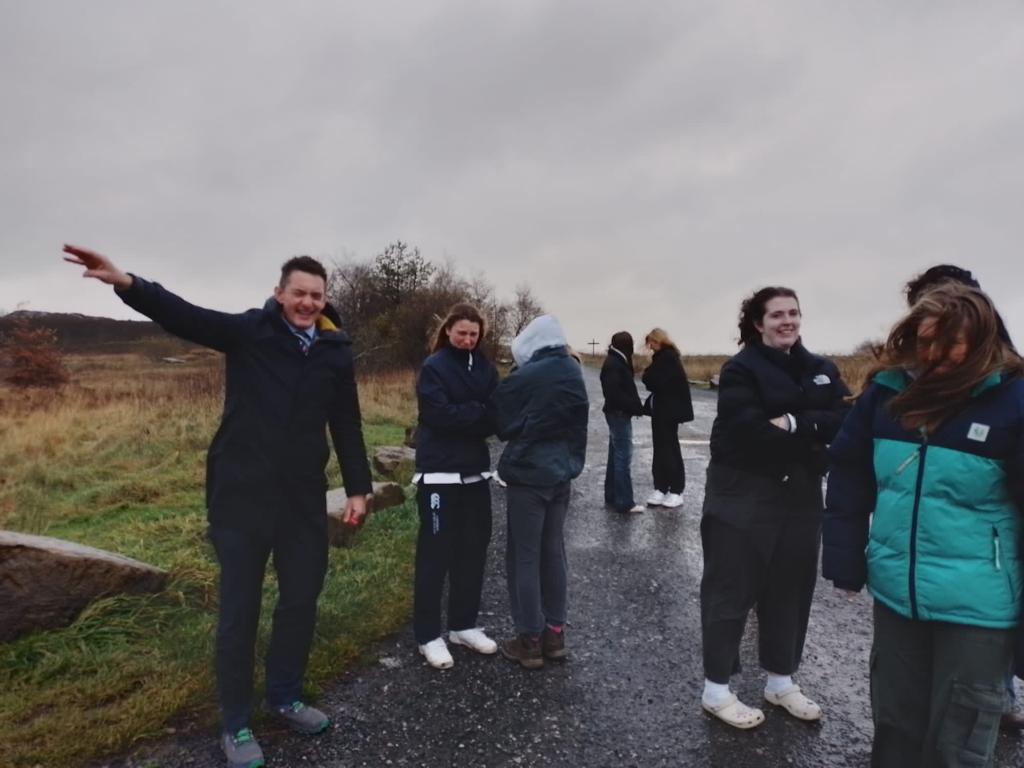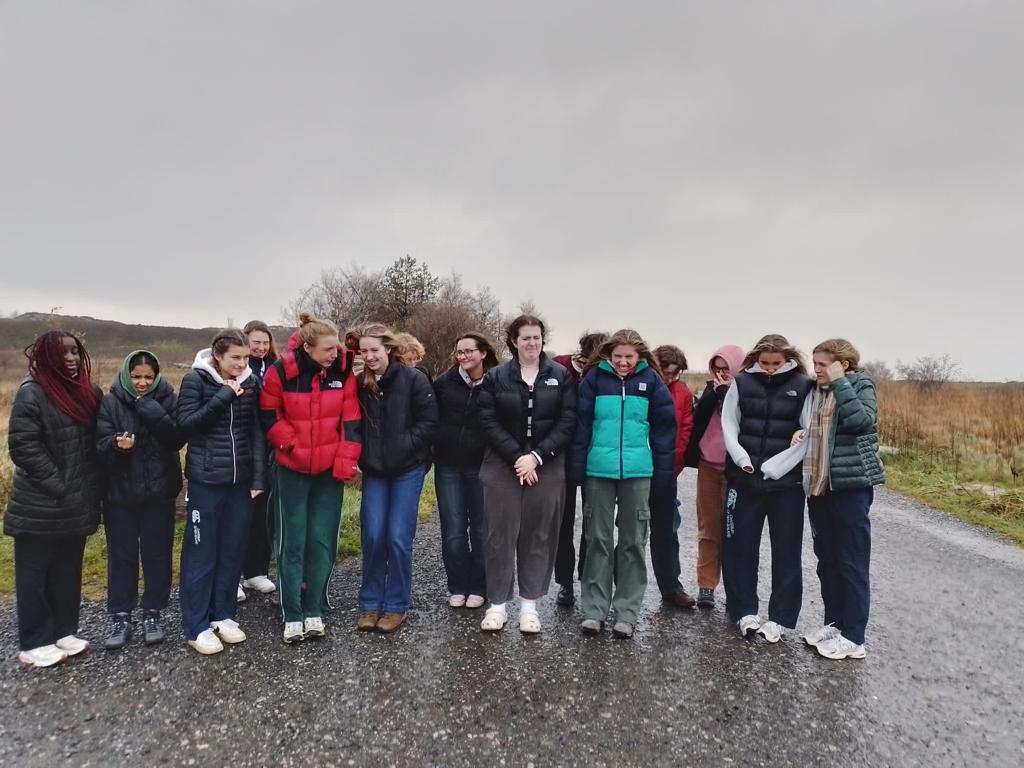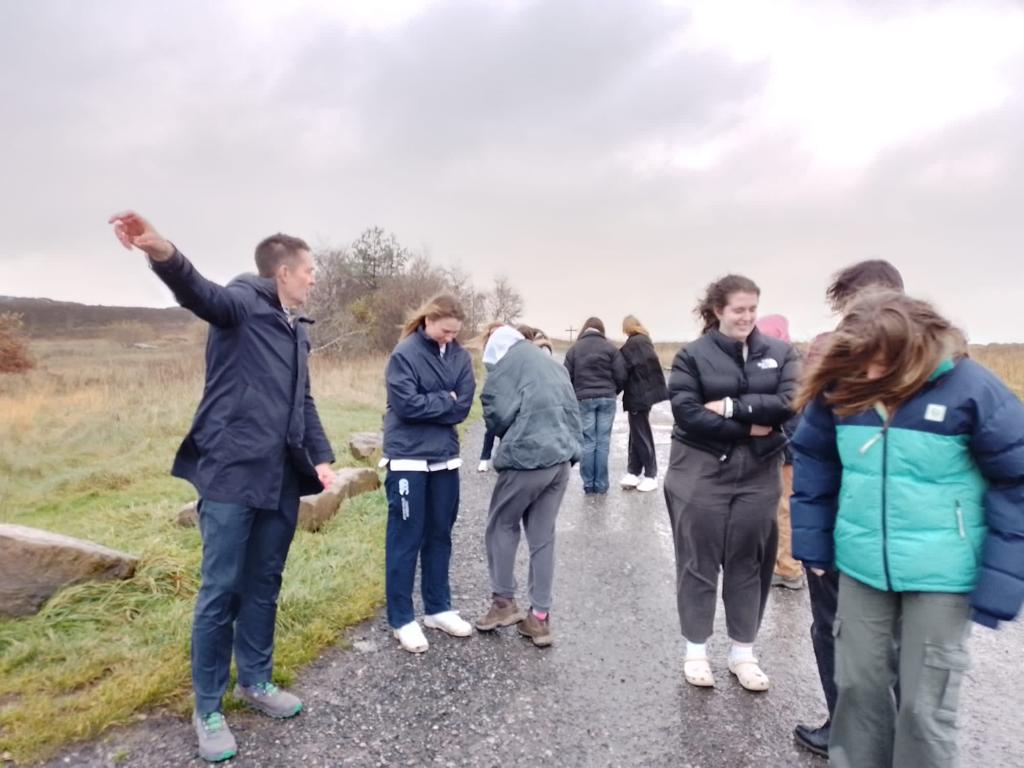Brontë students head to the wily, windy moor
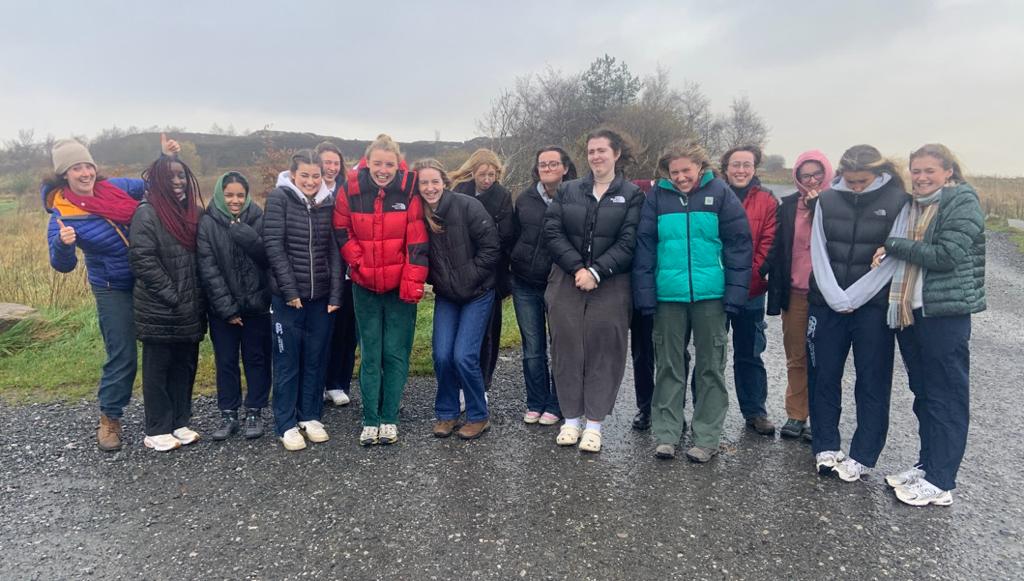
Sixth form English literature students enjoyed immersing themselves in the wild landscape and inspirational home of the Brontë family. WILLOW BAKER reports
AS we drove away from Ripon the minibus seemingly became surrounded by mist as though we were suspended in the clouds. The number of houses quickly depleted, and we were surrounded by a barren, open landscape with few signs of life aside from a bedraggled sheep. As we dipped back down into the valley ahead were clusters of soot-stained buildings. We wound our way through the valley, and small villages, eventually approaching Howarth.
We quickly escaped the wuthering winds, running into the chapel where we were met by an elderly man, more welcoming than Joseph at Wuthering Heights. Once we had settled in the frigid room, we began to explore the Brontë family history and the life of the sisters in the context of Howarth during the 19th century. Howarth’s infrastructure has not changed dramatically since this period. The surrounding valley is characterised by the harsh weather conditions and mills in the area creating a gothic landscape, reflected through the novels. Being in such a distinctive setting helped us connect with the Brontës' ideas and furthered our understanding of the context of the novel.
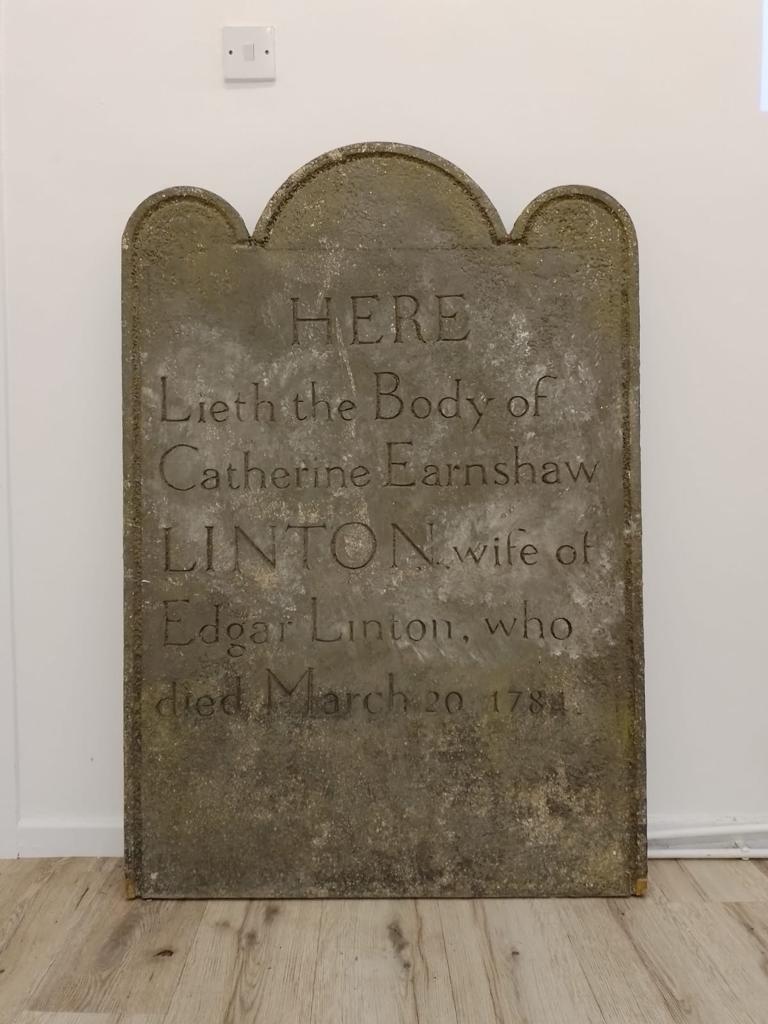
Once leaving the chapel we entered the cramped, overspilling graveyard, where Patrick Brontë would have buried people daily, enhancing the ominous atmosphere. Inevitably we retreated into the church where the Brontë family is buried, where Patrick Brontë would have delivered his sermons and which now displays toast art!
Opposite the church is the Parsonage Museum, where the Brontë sisters created their mystical worlds, enabling them to curate such novels. The Parsonage is displayed just as it was when the Brontë family lived there, enabling us to envisage them walking around the tables, discussing ideas, and reading until late at night.
After lunch, we met the lecturer to discuss interpretations of the novel. It seemed abstract to be discussing such vast ideas from varying influential contemporaries in the context of a secluded Yorkshire village.
Escaping the centre of the Brontë world, we went to explore Howarth’s high street, made up of cafés, gift shops, and sweet stores.
Unable to bear the conditions for too long, we clustered together, back into the minibus, which steamed up within minutes. However, Mr Webb ensured we experienced the true brutality of the weather by driving us to the top of the moor where we looked down onto Howarth, confronting the harrowing winds whilst picturing Cathy or Heathcliff exploring the grassy land above us.
